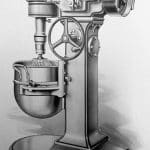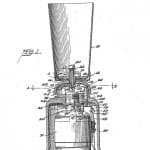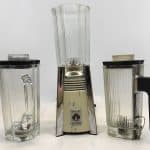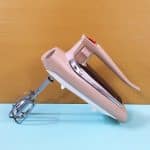100 Years of Mixing Things Up
by Jessica Kosinski
There are many things we all take for granted every day that we shouldn’t. On that list are a lot of home appliances. It was not too long ago that things we consider standard now, such as dish and clothes washers, were unheard of. One appliance you probably use on a regular basis is a blender. It has been approximately 100 years since the first blender close to what we know today was produced, which isn’t such a long time in the span of human history. Only a couple of generations back, mixing everything from cookie batter to beverages was a much more difficult undertaking that had to be performed by hand. Let’s delve a little deeper, as we take a peek at how mixers and blenders have evolved and changed our lives.
Prior to the 1900s, there was not even any such thing as an electric stand mixer. Batters of any sort had to be mixed using nothing more than a spoon. In 1908, an inventor named Herbert Johnson changed all that with the creation of the first stand mixer for the Hobart Manufacturing Company. However, families still had to do their mixing by hand because his mixer held 80 quarts and was used solely in bakeries. Yet, the need was seen for a small scale version.
Herbert Johnson finally created a solution with the development of the KitchenAid Food Preparer that hit store shelves in 1919. Over the years, that original home mixer model has been perfected even further with reductions in weight and the addition of more color, speed, and other options. Other companies, including Sunbeam, also released stand mixers, making them commonplace in today’s homes. In fact, the Sunbeam MixMaster of 1930 invented by Ivar Jepson is credited as the mixer that really popularized the home stand mixer concept in the United States.
The Invention of the Blender
Even though the stand mixer revolutionized baking in commercial businesses and households, it did not fill every mixing need. Around that same time there was a push for more convenient methods of juicing or liquefying fruits and vegetables, especially to make various drinks. In 1922, an inventor named Stephen J. Poplawski, first started addressing that need by creating a blender for commercial soda fountain use. By 1932, he developed a blender for vegetables and fruits. However, the blender was not truly popularized in modern American homes until 1937, when the Waring Blender, also called the Miracle Mixer, was introduced to the American public. In 1946, John Oster released his Osterizer blender, which proved to be another blending hit with American families.
The invention of the fractional horsepower motor in 1910 is what made stand mixers, blenders, and many other modern household appliances as we know them today possible. That invention is often called the “Great Leap Forward” for the industry. Electrical giants like General Electric and Westinghouse almost immediately recognized the implications of such a motor for household uses. By 1915 the push for electrification of all homes across the United States was on, and home appliance manufacturers were taking full advantage of it.
Another interesting fact about the modern blender is it is not just a handy kitchen tool. Blenders have actually played vital roles in some historical events that have shaped all our lives. One of the biggest was the role a blender played as a research tool for Dr. Jonas Salk when he was developing his famous polio vaccine in the 1950s.
Admittedly, collecting multiple vintage and antique mixers or blenders may be impractical. They take up a lot of space, and you can only use one at a time. If you already have a modern blender produced just a few years ago, buying an older model may serve no practical purpose. The value of nostalgia is often more alluring than the value of practicality. It is possible to pick up working mixers by companies such as Hobart and General Electric that still run. For example, an early mixer or blender can be an excellent addition when you are designing a kitchen with vintage appliances. You may also want one to remind you of baking in the kitchen with relatives who owned such appliances when you were young.
Whatever your reason for looking for early mixers and blenders, you do not have to look far. Early blenders were primarily metal, which stands the test of time well, and many were produced. Therefore, they are still easy to find today. In fact, the number of blenders and mixers available has helped to keep their prices low. Even popular blenders like the MixMaster can still often be found for prices ranging from $15 to $50 at antiques shops, flea markets and estate sales. Although readily available and affordable now, they have the potential to become harder to find and even more popular with the passage of time, making them potential collectibles of the future.
Jessica Kosinski has been a freelance writer specializing in writing short articles for 15 years. She is also an avid collector of both antique books and Star Wars memorabilia. Although she is not in the antiques industry professionally, she has learned a lot about antiques over the years by periodically helping out at her mom’s antiques shop in Greenville, NH. She currently balances maintaining the antiques shop’s Facebook page, www.facebook.com/MallofNE, and working on various freelance writing assignments. She can be reached at dementorskiss77@yahoo.com.












Related posts: